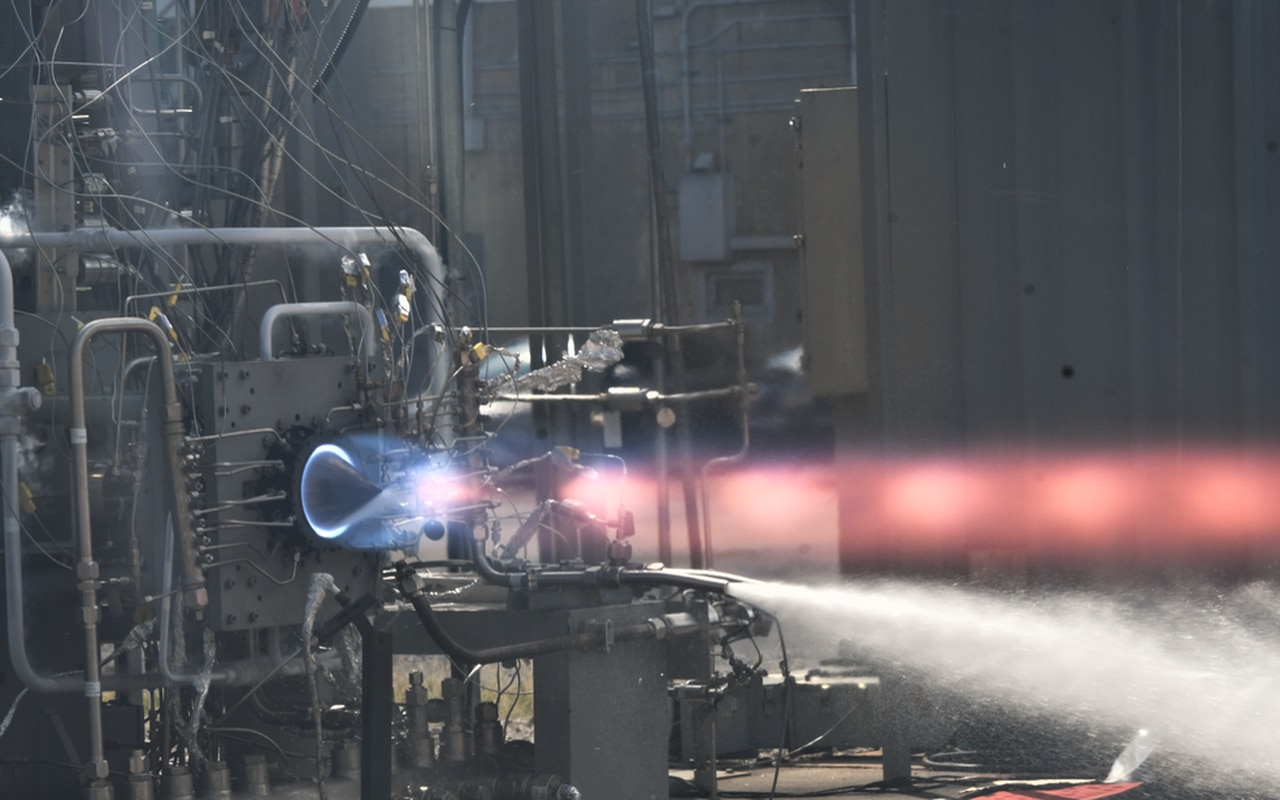NASA tests new 3D-printed rocket engine in Alabama for deep space travel
You’re exploring for precious metals on the moon but your lander’s engine needs a replacement part and that’s making it a little hard to concentrate. So, you do what anyone would do in the circumstances: Turn on your 3D printer and make the part yourself. Or call the mother ship overhead and put in an order for its 3D printer.
Rocket engines that generate more power with less fuel and will be built and repaired with 3D printed parts are the kind of next-generation technology NASA needs to get to and live on places like the moon. Now, a new engine tested at the Marshall Space Flight Center in Huntsville is getting national attention as a breakthrough in the development of those engines. This “rotating detonation rocket engine” or RDRE generates thrust by using “a supersonic combustion phenomenon known as a detonation,” Marshall says.
Marshall is NASA’s propulsion center, and the engine was recently test fired there more than a dozen times for a total of nearly 10 minutes, NASA said Wednesday. The test fires have taken place since late in 2022 at Marshall’s East Test Area, and NASA’S partner in the engine’s development is IN Space LLC of West Lafayette, Indiana.
The engine passed its main test by proving its hardware – made by additive manufacturing or 3D printing – could operate for long periods under extreme heat and pressure. Operating at full throttle, the engine produced more than 4,000 pounds of thrust for nearly a minute at the highest pressure for the design so far.
NASA said the engine’s throttling and internal ignition systems also performed successfully marking additional milestones in development. “This successful demonstration brings the technology closer to being used with future flight vehicles, enabling NASA and commercial space to move more payload and mass to deep space destinations, an essential component to making space exploration more sustainable,” NASA said.
The work is already drawing attention from well-read space writers like Eric Berger, a booster of new approaches to space exploration and new space companies like SpaceX.
Berger called the engine news “interesting” on a Twitter post already viewed nearly 35,000 times by 1:15 p.m. CST today. He said the engine “just the kind of cutting edge work NASA’s best propulsion engineers should be doing.”
